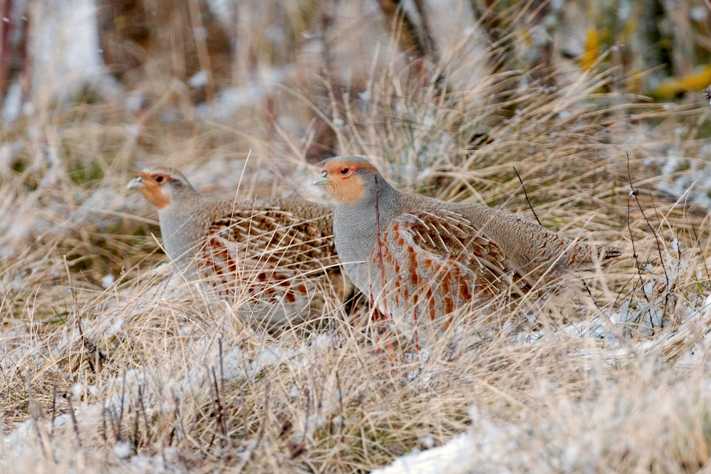Animal and plant populations consist of individuals which breed and die. Healthy populations recruit enough breeders, after deaths and dispersal of young, to replace breeders that die. If they can breed fast, like plants and animals that produce many eggs or seeds each year, populations can grow fast provided feeding conditions are good year-round. They can also sustain substantial harvest, by humans or other predators, or loss in poor weather when young.
However, land that humans manage for food and amenity can unwittingly become unable to provide food at some times of year, or too good for hunting by predators. Fragments of land that remain suitable may produce too few dispersers to recolonise other fragments that suffer temporarily unsustainable losses to predators, weather or pollution. Lack of connectivity between fragments may stop dispersal. Populations may die out over such large areas that they need restoration by humans.
Releases of plants or animals to supplement decreasing wild stock, or into areas where they have occurred previously (re-introductions), have therefore become an increasingly popular conservation method to restore declining or locally extinct species. They work especially well for species that breed fast if land is managed for them. However, restoration needs careful planning, to minimise risks of at best wasting time and at worst harming the environment.
Minimising Risk

Partridges do well in areas with crops, cover and wild-flowers that support insect food for chicks. Perches for raptors are not so useful (© V Šegrt)
Time, money and good intentions can be wasted by attempting to restore a species in an area which no longer meets its original needs. Plants and animals need a tripod of support, including nutrients, security from weather (substrate, shelter) and safety from other organisms (disease or predators). These support conditions may interact. Thus plants may require soil as a secure substrate and with suitable nutrients, though nutrients may be supplied artificially at least to get them going. Animals may need habitat offering plant food and cover from predators, though management of predators may be needed especially in the early stages of restoration. Can you sustain the effort that will be required for the necessary management?

Stock must be healthy and genetically fit (© Markus Jenny)
Harm from re-stocking or reintroductions can occur if stock with unsuitable genetics or carrying disease are used for re-stocking; this runs the risk of damage to plants and animals already present. If conditions have changed since a species was lost, a re-introduced species can even rapidly become a pest. Care is also needed to ensure that the donor stock will not be harmed by taking individuals for the restoration project. If stock for reintroduction is provided through managed breeding to enhance numbers, it should ensure that the restoration does not unwittingly introduce disease or reduce genetic diversity.
IUCN Guidelines
In an attempt to impose some order into what could become chaos, the International Union for the Conservation of Nature (IUCN) devised a set of ‘Guidelines for Reintroductions and other Conservation Translocations’ in 1995 which were revised in 2013. As these guidelines are quite complicated and are not in all languages, a simplified decision tree was also made. This was specifically for the purpose of helping communities to restore plants and animals by moving them relatively short distances.
Now is a good point to read the page on Revitalising Habitats. You will then be ready to visit the other links given in order for you below.
On the web
This page is important whether you wish to go on to re-establish Grey Partridges, or are content to see how much habitat for wildflowers and insects (perhaps especially bees and butterflies) you can restore in your garden, farm, or community as a whole.
If, having also read the page on Revitalising Habitats, you feel comfortable that any habitat restoration you may need can be achieved through a Local Conservation Translocation, you may also like to visit the two links below.
The successful re-establishment of any species through releasing is a serious affair. Any re-introduction, re-stocking or release programme for Grey Partridges must be guided by this document, together with the:
Grey Partridge re-establishment efforts are labour-intensive, lengthy and expensive operations with very little guarantee of success if all guidelines are not followed in full.